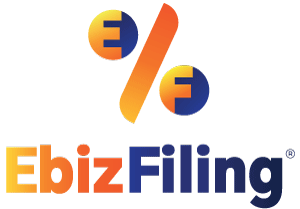
-
January 22, 2025
Forms Sahaj(ITR 1) and Sugam(ITR 4)
Introduction
As India approaches towards the Union Budget 2025, expectations are high for further reforms that will not only justify GST rates, Income Tax but also ease the compliance burdens across various sectors.
Hence, the forms Sahaj and Sugam analogous to ITR-1 and ITR-4 for income tax returns aims to streamline this experience for taxpayers.
What is Sahaj and Sugam Form?
Who is supposed to file these forms Sahaj and Sugam?
The Sahaj and Sugam forms for GST (Goods and Services Tax) are simplified GST return forms introduced for small taxpayers under the GST composition scheme. They aim to reduce the compliance burden for businesses.
1. Form Sahaj (ITR1)
Designed for taxpayers supplying only B2C (Business-to-Consumer) outward supplies. It is straightforward and requires fewer details, focusing on sales made to end consumers.
Who can use it:
-
- Individuals who are residents (other than not ordinarily residents).
- Total income does not exceed ₹50 lakhs.
- Sources of income include:
- Salary or pension.
- Income from one house property (excluding cases where there is a brought-forward loss or loss to be carried forward).
- Income from other sources (e.g., interest from savings accounts, fixed deposits, etc.).
- Agricultural income up to ₹5,000.
Who cannot use it:
-
- Individuals with income exceeding ₹50 lakhs.
- Non-residents or individuals with “Not Ordinarily Resident” status.
- Those earning from more than one house property.
- Individuals having income under the head “Business or Profession.”
Purpose:
-
- This is meant for salaried individuals and those with straightforward income sources.
2. Form Sugam (ITR 4)
For taxpayers involved in both B2B (Business-to-Business) and B2C outward supplies. It allows reporting of input tax credit and outward supplies in a simplified manner.
Who can use it:
-
- Individuals, Hindu Undivided Families (HUFs), and firms (other than LLPs) who are residents.
- Total income does not exceed ₹50 lakhs.
- Sources of income include:
- Business income under the presumptive taxation scheme (Sections 44AD, 44ADA, or 44AE).
- Professional income under presumptive taxation.
- Income from one house property.
- Income from other sources.
Who cannot use it:
-
- Non-residents or individuals with “Not Ordinarily Resident” status.
- Income exceeding ₹50 lakhs.
- More than one house property.
- Having income under capital gains or speculative business income.
- Owning foreign assets or earning foreign income.
Purpose:
-
- Designed for small businesses and professionals opting for presumptive taxation, where income is presumed to be a fixed percentage of gross receipts or turnover.
NOTE: These forms are part of the GST return filing framework for taxpayers with an annual turnover of up to ₹5 crore, promoting ease of compliance.
Key differences between Sahaj or Sugam form.
| Feature | ITR 1 (Sahaj) | ITR 4 (Sugam) |
| Income Limit | ₹50 lakhs | ₹50 lakhs |
| Applicability | Salary, pension, etc. | Business/Professional income (presumptive) |
| Presumptive Taxation | Not applicable | Applicable under Sections 44AD, 44ADA, 44AE |
| Business Income | Not allowed | Allowed |
When should one file Sahaj or Sugam form?
Eligible taxpayers must file the Sahaj and Sugam forms quarterly. The Sahaj form is due on the last day of the month following the quarter, such as July 31 for the April-June quarter. Similarly, the Sugam form must be filed quarterly, but the due date is the 25th of the month following the quarter.
Tax Calculation for form Sahaj or Sugam
Sahaj Form:
- Simplified tax calculation, particularly for salaried individuals.
- Option to claim deductions like 80C (for PF, insurance premiums), 80D (health insurance), and others.
Sugam Form:
- Tax is calculated on a fixed percentage of business turnover (e.g., 8% under Section 44AD).
- Claims for deductions are generally limited to standard exemptions under Section 80C and other applicable sections, but detailed expenses are not required.
Benefits of filing form Sahaj or Sugam
| Benefit | Sahaj (ITR 1) | Sugam (ITR 4) |
| Simplified Filing Process | Yes, for salaried individuals | Yes, for small businesses and professionals |
| Presumptive Taxation | Not applicable | Yes, for small businesses and professionals |
| Minimal Documentation | Yes, minimal documents required | Yes, minimal documents for businesses opting for presumptive taxation |
| Tax Audit Requirement | No | No (for presumptive taxation) |
| Faster Refund Processing | Yes | Yes |
| Cost-Effective | Free (for most taxpayers) | Free (for most taxpayers) |
| E-filing | Yes | Yes |
| Applicable for Small Businesses | No | Yes |
Conclusion
Forms Sahaj and Sugam represent a major step towards simplifying GST filing for small businesses. They offer easy to use formats, and then these forms make the process faster and less complicated. They help small taxpayers comply easily with tax rules, making annual GST returns smoother and contributing to a more user friendly system.
Suggested Read :
Difference between Form 16, Form 16B, and Form 16A
File Your GST Return
File error-free GST Return and in-time. Get your GST return filings done through experts ebizfiling.com.
About Ebizfiling -










February 6, 2025 By Team Ebizfiling
Understanding the New GST State Code The Indian government implemented the Goods and Services Tax (GST) as a transformative tax reform to streamline the tax structure and ensure uniformity across the country. One of the key features of the GST […]
January 7, 2025 By Team Ebizfiling
Complete Guide to Apply Online Application for Cancellation of GST Registration Goods and Services Tax (GST) is a comprehensive tax system implemented in India to regulate the taxation of goods and services. It replaced multiple indirect taxes, offering a simplified […]
January 6, 2025 By Team Ebizfiling
Challenges in GST Implementation in India The introduction of the Goods and Services Tax (GST) marked a significant reform in India’s taxation system. Implemented on July 1, 2017, GST aimed to simplify the indirect tax structure by replacing multiple taxes […]